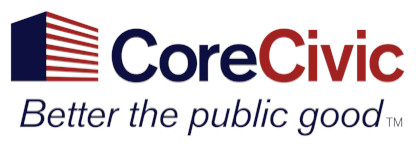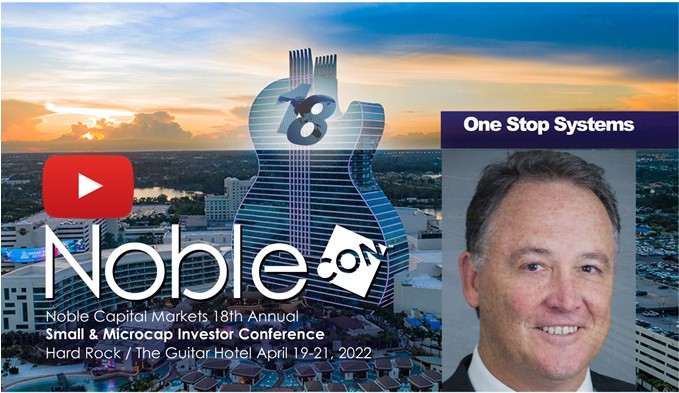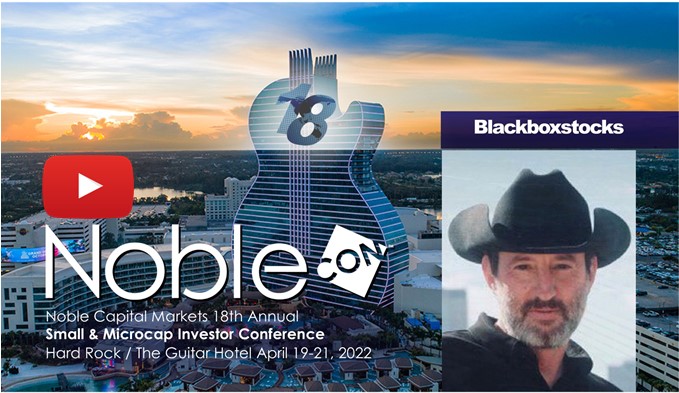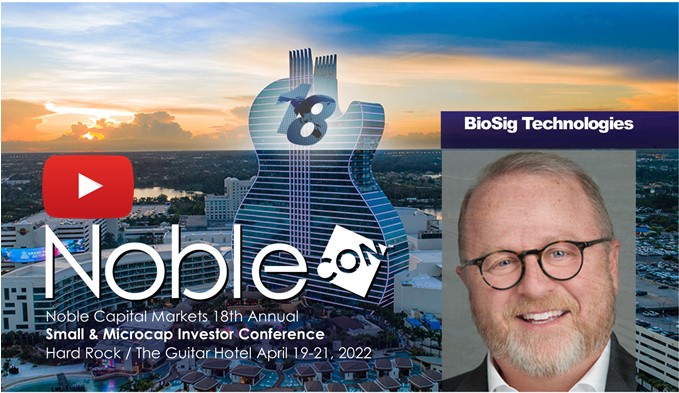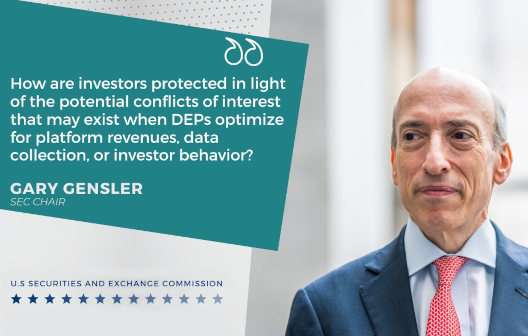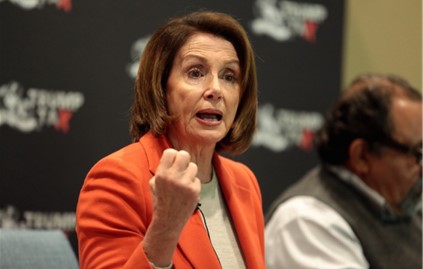
Monday, July 25, 2022
Digital, Media & Entertainment Industry
The Advertising Recession Is Here: How Bad Will It Be?
Michael Kupinski, DOR, Senior Research Analyst, Noble Capital Markets, Inc.
Patrick McCann, Associate Analyst, Noble Capital Markets, Inc.
Refer to end of report for Analyst Certification & Disclosures
Overview: How Bad Will It Be? We believe that the second quarter will reflect softening in advertising, particularly in National advertising, while Local appears to be holding up. Overall, advertising is expected to be down for the first time since Feb. 2021. Notably, the softness is largely adversely affecting traditional mediums, while Digital appears to still be growing. So, now that we are in the ad recession, what should investors do?
Digital Media: Picking winners and losers. The Digital Media stocks have been rocked down a significant 44.7% over the past year, underperforming the general market. This is in spite of the fact that digital advertising is still robust. We highlight a recent addition to our coverage list with a company that is expected to exceed expectations in the upcoming quarter.
Television: Will It Fare Better This Time? We believe that investors shunned highly leveraged broadcasters, but have overlooked favorable fundamental attributes. In particular, E.W. Scripps should benefit from outsized Political advertising and the significant growth of Retransmission revenue in 2023. Furthermore, for the industry, economically sensitive advertising is much less of total revenues than in past cycles.
Esports: What Will The Industry Look Like? Once the darlings of Wall Street, the industry has taken a meaningful turn as investors shun developmental companies. The esports sector is in survival mode, shuttering money losing operations and/or selling off assets. We look at some potential winners for speculative investors.
Radio: All Is Not Lost. We believe that investors have not differentiated between the winners and the losers in the Radio space, throwing all of the stocks out. The Radio stocks are down on average 51% in the latest quarter and 63% for the trailing 12 months. The most recent weakness was fueled by a Wall Street ratings downgrade. But, what about small market radio? Radio companies with large, diversified digital media businesses? We look at compelling values in this out of favor space.
Overview
How Bad Will It Be?
The advertising recession may already be here. Based on Standard Media Index’s U.S. Ad Market Tracker (Ad Tracker), the U.S. advertising market contracted 3% in June, illustrated by Figure #1 Ad Trends. This was the first decline in the Index since February 2021. Notably, the contraction in advertising was felt by traditional media, which declined 16.6%, while Digital Media increased 8.6% in June. A bifurcated market? The advertising decline was among the U.S. largest, top 10 advertisers. Ad Tracker indicated that the other categories expanded a modest 1.2% in June. What does the data tell us? For one, economically sensitive National advertisers are anticipating a general economic downturn given a rising interest rate environment. National advertising was very weak, down in excess of 20% for most traditional mediums. In our view, advertising weakness will disproportionately be felt in the major U.S. markets where the economy is largely impacted. It is possible that local advertising may still growing, albeit modestly and more likely in smaller markets. Traditional mediums with a large digital component likely will perform better, if not well, compared with industry peers. We believe that advertising pacings in July are likely to be similar to that of the weak advertising environment in June, driven by continued weak National advertising.
The media stocks seem to have already anticipated the somber news. Media stocks as a group over the past 12 months are down 30% to 40%, significantly under performing the general market decline of 20.4% as measured by the S&P 500 Index in the comparable time frame. While Digital fundamentals appear more favorable, the digital stocks did not fare well. The average Digital Media stock, which includes Digital Ad Tech, is down 35% over the past 12 months.
Are the stocks oversold? We think so. In our view, while second quarter results may miss expectations, given the softness in advertising in June, we believe that the results may be better than most investors fear. Most companies guided toward a softer second quarter from the first quarter. As such, most investors expected moderation in revenue in the quarter. With the 30% to 40% decline in stocks over the past year, we believe that investors have factored in a severe economic downturn. The second quarter advertising environment does not appear to reflect that type of situation. While the third quarter is likely to start off weak, a follow through from June into July and August, we believe that advertising should improve in August. Media fundamentals in the second half of the year should be buoyed by the influx of Political advertising, which has already begun in some markets. In addition, Digital advertising appears to be doing well. And, to some degree, advertisers may be pushing budgets toward the important Holiday season. Macro economic trends may even force advertisers to advertise more heavily into back to school and the important Holiday seasons. In addition, the Fed typically is not as aggressive in raising rates in advance of elections. It is possible that the Fed will read the recent economic weakness as a signal to be less aggressive on rate increases. Such a move would buoy the general stock market, in our view. Consequently, there may even be an improvement in advertising toward the end of the third quarter and into the fourth quarter. This scenario would suggest that there could be a tradeable bounce in media stocks.
What should investors do? In our view, media investors should take an accumulation approach. Historically, the best time to buy media stocks has been in the midst of an economic downturn. The mid-point of that downturn is difficult to predict. As such, investors should be selective and take an accumulation approach. We encourage investors to focus on companies that have large digital segments, have diversified revenue streams that are not advertising sensitive, and on companies that have the financial capability to weather an economic downturn. Some of our favorites include: Entravision (EVC), E.W. Scripps (SSP), and Townsquare Media (TSQ). Additional companies are highlighted later in this report.
Figure #1 US Ad Trends

Figure #2 Traditional Media Stock Performance (Trailing 12 Months)

Source: Capital IQ
Internet & Digital Media
Will There Be Relief?
Last quarter we wrote that despite performing well overall in 2021, Internet and Digital Media stocks performed poorly in the fourth quarter of 2021 and again in the first quarter of 2022. Unfortunately, that trend continued in the second quarter of 2022 as well. As such, it was the third consecutive quarter of declines for Internet & Digital Media stocks. None of Noble’s Internet and Digital Media Indices outperformed the broader market, which we define as the S&P 500. As illustrated in Figure #3 Internet & Digital Media stock performance, the S&P 500 Index decreased by 16% in 2Q 2022, which was better than Noble’s Digital Media Index (-24%), MarTech Index (-28%), Esports & iGaming Index (-29%), Social Media Index (-30%), and AdTech Index (-39%).
Figure #3 Internet & Digital Media Stock Performance

Source: Capital IQ
The theme from last quarter was that high flying stocks got “their wings clipped�, in which we noted that the tech stocks with the highest multiples were the worst performers in the sector. What’s interesting to note this quarter is that not even the FAANG stocks were immune to this trend in 2Q 2022. Last quarter, only two of the FAANG stocks posted double digit declines. This quarter, all of them did: Google (GOOGL) was down 22%, Apple (AAPL) was down 22%, Facebook was down 27%, Amazon was down 35%, and Netflix was down 53%.
It is not surprising that AdTech stocks were the worst performers in 2Q 2022. Advertising spend is a discretionary expenditure and with the backdrop of macro headwinds that include inflation, rising interest rates, war in Ukraine and supply chain issues, investors decided to shoot first and ask questions later. We believe advertising held up well in the months of April and May, but began to see a slowdown, particularly in national advertising, in June, as mentioned earlier in this report.
Nevertheless, recent data suggests that online ad spending growth has slowed, which was confirmed by SNAP’s second quarter earnings call in which they noted that company’s revenue growth decreased from 38% in 1Q to 13% in 2Q. More concerning was that the company’s 3Q revenues are pacing flat with a year ago. Twitter’s (TWTR) 2Q results seem to have confirmed the ad spend slowdown. Twitter’s 16% revenue growth in 1Q slowed to -1% in 2Q. Twitter’s press release also noted the impact that a stronger dollar had on its revenue growth. A stronger dollar shaved 400 bps off Twitter’s 2Q revenue growth.
Perhaps more concerning for Snap and Twitter was that expense growth significantly exceeded revenue growth. Snap’s operating expenses increased by 27% resulting in a 94% decrease in adjusted EBITDA (to $7M from $117M in 2Q 2021) as margins fell from 12% in 2Q 2021 to 1% in 2Q 2022. Twitter’s results were little better: expenses increased by 26%, resulting in an adjusted EBITDA decrease of 68% (to $112M from $343M in 2Q 2021) as margins fell to 10% from 29% in 2Q 2021.
We expect more companies to report moderating revenue growth and those that rein in expense growth ought to outperform those that face significant margin compression.
AdTech
Finding Gems In The Rubble
The Ad Tech segment was the worse performing in the Internet and Digital Media space in the latest quarter and for the full year down 37.2% and down 50.9%, respectively. We believe that the poor performance reflected the overall downward trend for National advertising, decreasing industry margins, and lack of investor interest in developmental ad tech companies that have negative cash flow. In addition, we believe that investors are waiting until the dust settles on Googles privacy policy and the expectation of limitations on that company’s use of cookies in 2023. We find value in this sector, however, with a recent initiation on the shares of Direct Digital (DRCT). While this is a developmental company, as well, it has positive cash flow and a flexible balance sheet. In our view, the company is expected to report positive upside in Q2 revenue and cash flow, likely to beat consensus estimates. Finally, its stock valuation appears compelling, trading at a substantial discount to its peers as highlighted in Figure #4 Ad Tech Comparables. In our view, Direct Digital appears to be a gem in the rubble of the Ad Tech stocks.
Figure #4 Ad Tech Comparables

Source: Eikon and Noble estimates
Marketing Tech
Finally Getting The Valuation It Deserved
The Marketing Tech stocks declined 25.6% in the second quarter, underperforming the general market. But, there was a bright spot. The shares of Harte Hanks increased a significant 68% in the latest quarter. We believe that investors are just now catching up to the transformation at the company. Just 2 years earlier, the company was not generating positive cash flow, had significant amount of debt and unfunded pension liabilities. In the first quarter, the company exceeded expectations, delivering 12.1% revenue growth and an 114% increase in adj. EBITDA. In addition, the company completely changed its financial profile from just a few short years earlier, posting $9.7 million in cash and with a modest $5 million in debt. As we mentioned in our previous reports on the company, its unfunded pension liabilities benefit from a rising interest rate environment. As Figure #5 Marketing Tech Comparables chart illustrates, in spite of the latest move, we believe that there is still headroom for the shares given that the shares still trade below industry peers.
Figure #5 Marketing Tech Comparables

Source: Eikon and Noble estimates
Digital Media
Have We Seen Bottom?
Digital Media stocks declined 27.7% in the latest quarter. While virtually all of the stocks in the index were down, one of our closely followed stocks declined a modest 7.6% in the quarter, Travelzoo. But, the relative performance in the quarter masks a poor performance over the past 12 months. The shares are down 52% over the past 12 months from the height of enthusiasm for a recovery in the travel and leisure industry post Covid. While travel restrictions have been lifted, investors are now concerned over the prospect of what a weak global economy may do to the travel industry. Typically, inflation and consumer travel budget concerns would benefit the company as consumers would then seek deals for vacation/leisure travel. Is it possible that the stock has bottomed out? We believe that there appears to be limited downside risk for the shares near current levels, providing a favorable risk/reward relationship. As such, the TZOO shares are among our favorite Digital Media stocks.
Esports & iGaming
What Will The Industry Look Like?
Once the darlings of Wall Street the industry has taken a meaningful turn as investors shun developmental industries, like Esports. Many companies in this sector are in survival mode, shuttering money losing operations, seeking alternative financing options, and/or selling off assets. Companies that we follow in that category include Esports Entertainment, Engine Media and Motorsport Games. Figure #6 Esports & iGaming Comparables highlight the industry. In the case of Esports Entertainment, the shares are down 92% over the past year. Motorsport Games is down 95%. And, Engine Media is down 81% in the comparable time frame. Notably, each of those companies has a potential path to survive and create value to shareholders. In the case of Esports, there are assets that the company could sell, which generate cash flow. The risk is that it may not be able to sell them for what the company paid for them. Engine Media seems to be on a more favorable path at this point. The company quickly sold off assets and shuttered money losing businesses. As such, the company appears to have a pathway toward cash flow break even, expected by the third quarter. We view the GAME shares as a high risk/high reward prospect. Motorsport Games appears to us to be the most intriguing speculative investment. In our view, the company has multiple pathways to create value. It could time its game releases to generate positive cash flow, which it can then use to invest in launching additional games. In addition, it could seek financing from its parent company to fund its game development through launch. As such, Motorsport is among our favored speculative investment in the space. Finally, we recommend the shares of Codere Online Luxembourg in the iGaming space. The company has cash to develop its iGaming business in developing countries. It could back off of the development should market conditions change. As such, we believe that the company will survive and possibly become a leader in its respective markets as companies with less financial flexibility exit markets.
Figure #6 Esports & iGaming Comparables

Source: Eikon and Noble estimates
Television
Will Television Fare Better This Time?
Figure #7 Broadcast Q2 Stock Performance illustrates that the TV stocks dropped 22.6% in Q2, in what was a reversal from Q1 when the industry climbed a solid 10%. It appears the broad economic implications of prolonged supply chain disruptions, rising inflation, and concerns over an economic downturn in a rising interest rate environment curbed investors’ appetite. Larger cap stocks, such as Nexstar (NXST) performed better, down 13.6%, while the shares of E.W. Scripps (SSP) underperformed, down 40.0%, in the latest quarter. It is not surprising that the stocks are underperforming, but the level of decline is notable. It is typical that advertising driven media stocks underperform in a rising interest rate environment due to the adverse impact on economically sensitive advertising. But, television has diversified revenue streams, with Retransmission revenue accounting for a large portion of revenue. We believe that investors have not differentiated among the TV stocks. In the case of E.W. Scripps, the company is expected to benefit from strong Political advertising in the second half of this year. In addition, 75% of its subscribers in 2023 come up for renewal. Some of those subscribers are at very low rates. Based on our estimates, roughly 2.5 million Comcast subscribers are at $2.20 per sub. Based on current market prices, we believe that rates will rise nicely above $3.00 per sub. We believe that the high margin Political advertising and the lift from Retrans next year will allow the company to pare down debt leverage, which appears to be a key concern for investors. As such, we believe that the SSP shares are among our favorites. Figure #8 Broadcast TV Comparables highlight the current stock values in the industry.
But, one stock stands out to us, Entravision. This company has completely transformed from a traditional broadcast company to a Digital Media powerhouse. Digital now represents roughly 80% of total company revenues. While it is lower margin business, it is rapidly growing. The company represents Facebook, Spotify and TikTok is some of the fastest growing markets. Notably, the company recently announced that it has expanded its relationship with Meta to be the Facebook rep in Honduras and El Salvador, now representing 11 countries in Latin America. We believe that the company will report better than consensus estimates for the second quarter and recently raised our full year 2022 adj. EBITDA expectations. With the shares trading slightly above 4 times cash flow, we believe that there is limited downside risk and a favorable risk/reward relationship. The EVC shares lead among our favorite media stocks, or, should we say, Digital Media stocks. Notably, we will be putting Entravision into our Internet & Digital Media valuations going forward.
Figure #7 Broadcast Q2 Stock Performance

Source: Capital IQ
Figure #8 Broadcast TV Comparables

Source: Eikon and Noble estimates
Radio
All Is Not Lost.
Similar to the TV industry, radio stocks reversed course in Q2, falling 34.2% after modest 1.8% gains in Q1. While all media stocks struggled in the latest quarter, none have performed more poorly than the Radio sector. Noble’s Radio index is down a surprising 63% over the past 12 months as highlighted in Figure #9 Broadcast LTM Stock Performance. This market cap weighted index reflected the performance of the largest cap companies, including Audacy and iHeart Media, which are down 81% and 69%, respectively. Much of the pain in those stocks was delivered in the latest quarter, with Audacy down 67% and iHeart down 58%. Both of those stocks were adversely affected by a downgrade by a Wall Street firm, given the unfavorable outlook for National advertising, relatively high debt leverage, heading into a possible economic downturn. As investors shunned Radio stocks, they did not appear to differentiate among the players in the industry. Outside of Audacy and iHeart Media, the rest of the Radio stocks did not fare well either. the rest of the radio stocks were in the range of down 22% (Cumulus Media) to down 27% (Beasley Broadcast) on the low end to down 36% (Townsquare Media) and down 37% (Salem Media) on the high end.
Investors should take note. Townsquare Media is largely a digital media company, with 51% of its revenues derived from its fast growing Digital Media businesses. The company demonstrated that this business is largely recession resistant, growing revenues through the depths of the Covid pandemic. In addition, the company operates in small market Radio, which tends not to suffer from the vagaries of the economic cycle. Salem Media is somewhat similar in that it has a diversified revenue stream as well. In addition, over 30% of its Radio business is from a very stable block programming business. Finally, Beasley Broadcasting has recently bolstered its Digital development with an acquisition that allows the company to scale its Digital business. Management recently indicated that it plans for Digital to account for 40% of its total company revenues in a short 2 years. Bottom line, we believe that there are compelling stories in the Radio sector that are unique and offer attractive appreciation potential. Figure #10 Radio Comparables highlight the recession type valuations that many of the stocks currently trade.
Figure #9 Broadcast LTM Stock Performance

Source: Capital IQ
Figure #10 Radio Comparables

Source: Eikon and Noble estimates
For more information on companies mentioned in this report, including important disclosures, click on the following:
Beasley Broadcasting Group
Codere Online Luxemburg
Cumulus Media
Direct Digital Holdings
Engine Gaming & Media
Entravision
Esports Entertainment
E.W. Scripps
Gray Television
Harte-Hanks
Lee Enterprises
Motorsport Games
Salem Media Group
Townsquare Media
GENERAL DISCLAIMERS
All statements or opinions contained herein that include the words “we”, “us”, or “our” are solely the responsibility of Noble Capital Markets, Inc.(“Noble”) and do not necessarily reflect statements or opinions expressed by any person or party affiliated with the company mentioned in this report. Any opinions expressed herein are subject to change without notice. All information provided herein is based on public and non-public information believed to be accurate and reliable, but is not necessarily complete and cannot be guaranteed. No judgment is hereby expressed or should be implied as to the suitability of any security described herein for any specific investor or any specific investment portfolio. The decision to undertake any investment regarding the security mentioned herein should be made by each reader of this publication based on its own appraisal of the implications and risks of such decision.
This publication is intended for information purposes only and shall not constitute an offer to buy/sell or the solicitation of an offer to buy/sell any security mentioned in this report, nor shall there be any sale of the security herein in any state or domicile in which said offer, solicitation or sale would be unlawful prior to registration or qualification under the securities laws of any such state or domicile. This publication and all information, comments, statements or opinions contained or expressed herein are applicable only as of the date of this publication and subject to change without prior notice. Past performance is not indicative of future results.
Noble accepts no liability for loss arising from the use of the material in this report, except that this exclusion of liability does not apply to the extent that such liability arises under specific statutes or regulations applicable to Noble. This report is not to be relied upon as a substitute for the exercising of independent judgement. Noble may have published, and may in the future publish, other research reports that are inconsistent with, and reach different conclusions from, the information provided in this report. Noble is under no obligation to bring to the attention of any recipient of this report, any past or future reports. Investors should only consider this report as single factor in making an investment decision.
IMPORTANT DISCLOSURES
This publication is confidential for the information of the addressee only and may not be reproduced in whole or in part, copies circulated, or discussed to another party, without the written consent of Noble Capital Markets, Inc. (“Noble”). Noble seeks to update its research as appropriate, but may be unable to do so based upon various regulatory constraints. Research reports are not published at regular intervals; publication times and dates are based upon the analyst’s judgement. Noble professionals including traders, salespeople and investment bankers may provide written or oral market commentary, or discuss trading strategies to Noble clients and the Noble proprietary trading desk that reflect opinions that are contrary to the opinions expressed in this research report.
The majority of companies that Noble follows are emerging growth companies. Securities in these companies involve a higher degree of risk and more volatility than the securities of more established companies. The securities discussed in Noble research reports may not be suitable for some investors and as such, investors must take extra care and make their own determination of the appropriateness of an investment based upon risk tolerance, investment objectives and financial status.
Company Specific Disclosures
The following disclosures relate to relationships between Noble and the company (the “Company”) covered by the Noble Research Division and referred to in this research report.
Noble is not a market maker in any of the companies mentioned in this report. Noble intends to seek compensation for investment banking services and non-investment banking services (securities and non-securities related) with any or all of the companies mentioned in this report within the next 3 months
ANALYST CREDENTIALS, PROFESSIONAL DESIGNATIONS, AND EXPERIENCE
Director of Research. Senior Equity Analyst specializing in Media & Entertainment. 34 years of experience as an analyst. Member of the National Cable Television Society Foundation and the National Association of Broadcasters. BS in Management Science, Computer Science Certificate and MBA specializing in Finance from St. Louis University.
Named WSJ ‘Best on the Street’ Analyst six times.
FINRA licenses 7, 24, 66, 86, 87
WARNING
This report is intended to provide general securities advice, and does not purport to make any recommendation that any securities transaction is appropriate for any recipient particular investment objectives, financial situation or particular needs. Prior to making any investment decision, recipients should assess, or seek advice from their advisors, on whether any relevant part of this report is appropriate to their individual circumstances. If a recipient was referred to Noble Capital Markets, Inc. by an investment advisor, that advisor may receive a benefit in respect of transactions effected on the recipients behalf, details of which will be available on request in regard to a transaction that involves a personalized securities recommendation. Additional risks associated with the security mentioned in this report that might impede achievement of the target can be found in its initial report issued by Noble Capital Markets, Inc.. This report may not be reproduced, distributed or published for any purpose unless authorized by Noble Capital Markets, Inc.
RESEARCH ANALYST CERTIFICATION
Independence Of View
All views expressed in this report accurately reflect my personal views about the subject securities or issuers.
Receipt of Compensation
No part of my compensation was, is, or will be directly or indirectly related to any specific recommendations or views expressed in the public
appearance and/or research report.
Ownership and Material Conflicts of Interest
Neither I nor anybody in my household has a financial interest in the securities of the subject company or any other company mentioned in this report.
| NOBLE RATINGS DEFINITIONS |
% OF SECURITIES COVERED |
% IB CLIENTS |
| Outperform: potential return is >15% above the current price |
94% |
32% |
| Market Perform: potential return is -15% to 15% of the current price |
7% |
4% |
| Underperform: potential return is >15% below the current price |
0% |
0% |
NOTE: On August 20, 2018, Noble Capital Markets, Inc. changed the terminology of its ratings (as shown above) from “Buy” to “Outperform”, from “Hold” to “Market Perform” and from “Sell” to “Underperform.” The percentage relationships, as compared to current price (definitions), have remained the same.
Additional information is available upon request. Any recipient of this report that wishes further information regarding the subject company or the disclosure information mentioned herein, should contact Noble Capital Markets, Inc. by mail or phone.
Noble Capital Markets, Inc.
150 East Palmetto Park Rd., Suite 110
Boca Raton, FL 33432
561-994-1191
Noble Capital Markets, Inc. is a FINRA (Financial Industry Regulatory Authority) registered broker/dealer.
Noble Capital Markets, Inc. is an MSRB (Municipal Securities Rulemaking Board) registered broker/dealer.
Member – SIPC (Securities Investor Protection Corporation)
Report ID: 24375


